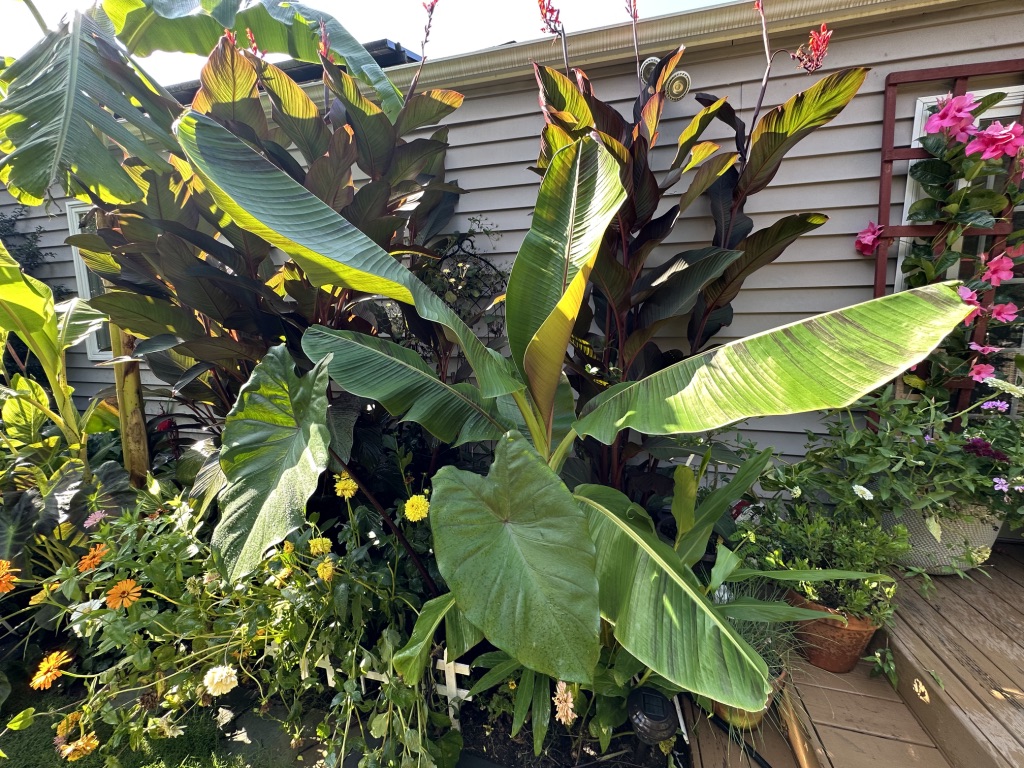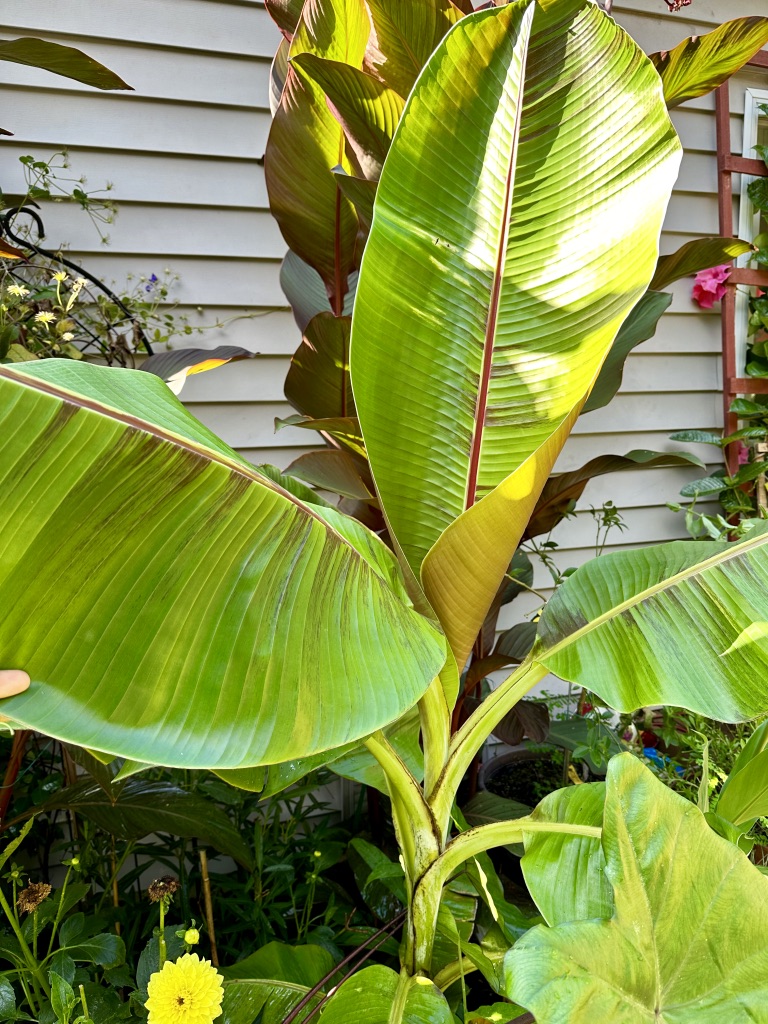Hibiscus are one of the most easy to identify flowers in the world and instantly transport me to the tropics. So it's a little weird they've actually been growing fewer and fewer tropical hibiscus in favor over the years. I've given my attention instead to the beautiful perennial hibiscus that comes back every year without any special care.
You can't blame me, right? It takes a lot of work to grow hundreds of tropical plants up north. Hardy Hibiscus have bigger flowers and more unusual leaves BUT I do have 6 tropical hibiscus this year that I am now sure I can garden without
Variegated Mahoe Hibiscus
This one proves that hibiscus isn't always about the flowers! This plant has amazing variegated foliage and is a must for any gardener who is looking for really interesting foliage. I fell in love with this plant when I went to Hawaii last January.
 |
In Hawaii
|
Mine was a super cheap $9 plant on sale when I got it from Logees in January 2023.
 |
| The Variegated hibiscus tiliaceus is on the far right (March 2023) |
It did okay in the house until April. It seems to have higher heat and humidity requirements than other hibiscus and didn't really start growing outside a few weeks ago when our night temperatures regularly stayed in the 70s. Here are some photos from early July!
Variegated ....
I got this one from a college plant sale. The foliage is very impressive, but I haven't had a single bloom yet. Honestly I am not too impressed, but it does look lovely in front of my Croton plant.
I had a lot more fun with Snow Queen. I recommend that cultivar if you're looking for a prolific blooming hibiscus with variegated leaves.
Colors & Flower Textures
Hardy Hibiscus flowers are big, but if you're looking for flowers that literally look handpainted, you need a tropical hibiscus in your life. I mean look at THIS!
And look at THIS! It's like a peony.
I unfortuantely was not given a cultivar name, but an Instagram friend with an incredible hibiscus collection says the first one looks like "Cajun Cocktail". Both of these were purchased from Bloomin Haus in Holtsville, NY.
Classic Red Hibiscus
This plant is special because it was given to me by a friend's mom in 2008 before she passed away. The red hibiscus is planted with a common pink hibiscus known as "Painted Lady". I haven't repotted it in about 10 years and it's starting to get VERY tired looking. You can look back at some of my earlier posts to see it in its prime.
I decided to do some light root pruning. I used a scissor to loosen the entire rootball and I cut off the bottom inch of the rootball and added about 3 inches of fresh soil to the bottom and fresh soil throughout the sides. I pruned about 6 inches off all the shoots. It probably won't flower until late August, but it will be much better for it!


















































